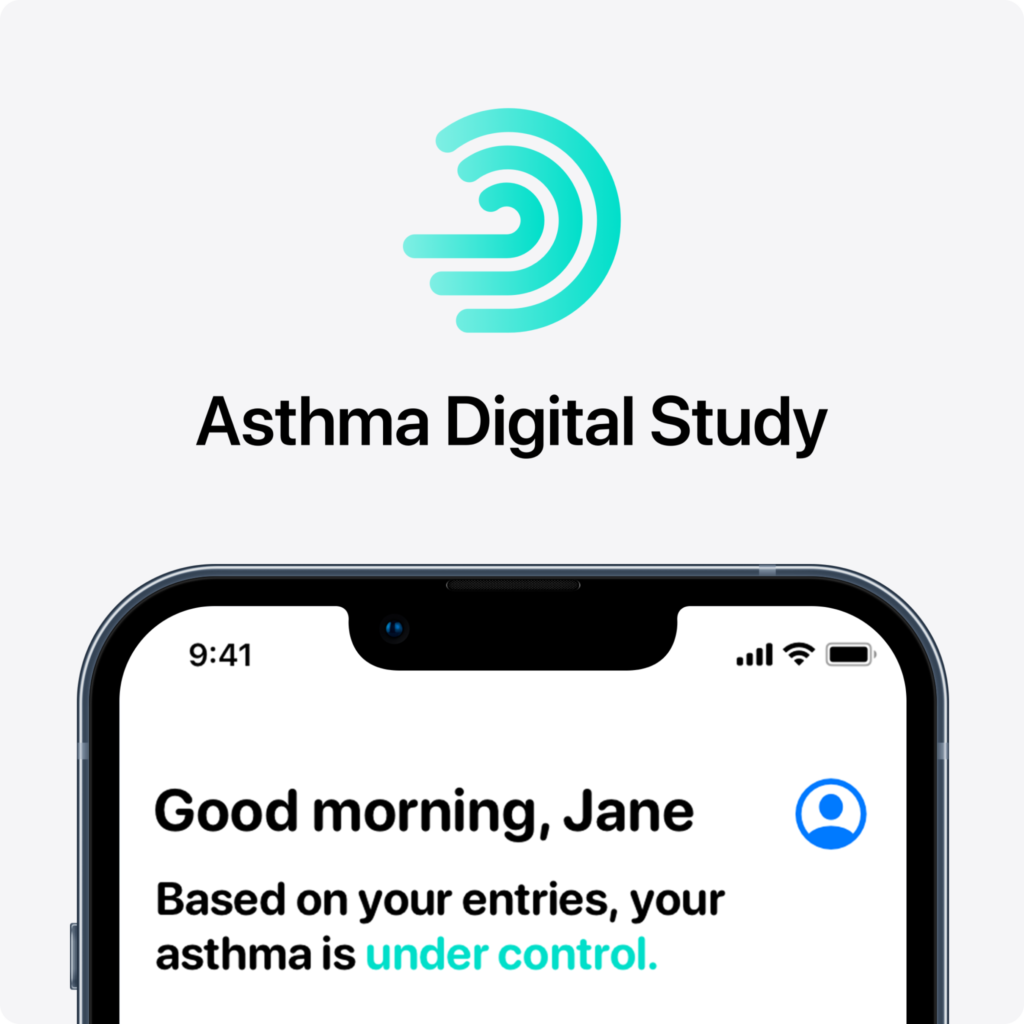
Overview
At Apple, I had the opportunity to work with doctors on projects aimed at managing chronic illnesses. One of these projects was the Asthma Digital Study, an app designed to help people with asthma track and manage their symptoms. The app allows users to record their daily symptoms and receive a score based on their level of control over their asthma.
This project was a collaboration with Anthem, with the company serving as the study partner to recruit participants and publish the outcomes. The study protocol has been published, and results are forthcoming.

Systems + IA

UI/UX

UX Copy
Symptom logging
One key aspect of reducing the risk of asthma exacerbations is being aware of triggers and symptoms. This often involves paying close attention to your surroundings, your physical and emotional well-being, and your activity level. However, this level of awareness can be overwhelming.
To help users stay on top of their asthma management, the app allows them to log their symptoms and triggers each day to determine their level of asthma control. Each day is treated as logged once an entry has been made. By logging their symptoms and triggers over time, users can establish a baseline of their health data, which can help them identify any clinically-relevant deviations that may indicate an oncoming asthma exacerbation. By raising awareness of these deviations, the app can help users take steps to prevent or mitigate asthma attacks.
An example of how a user might log triggers to see their asthma is not under control
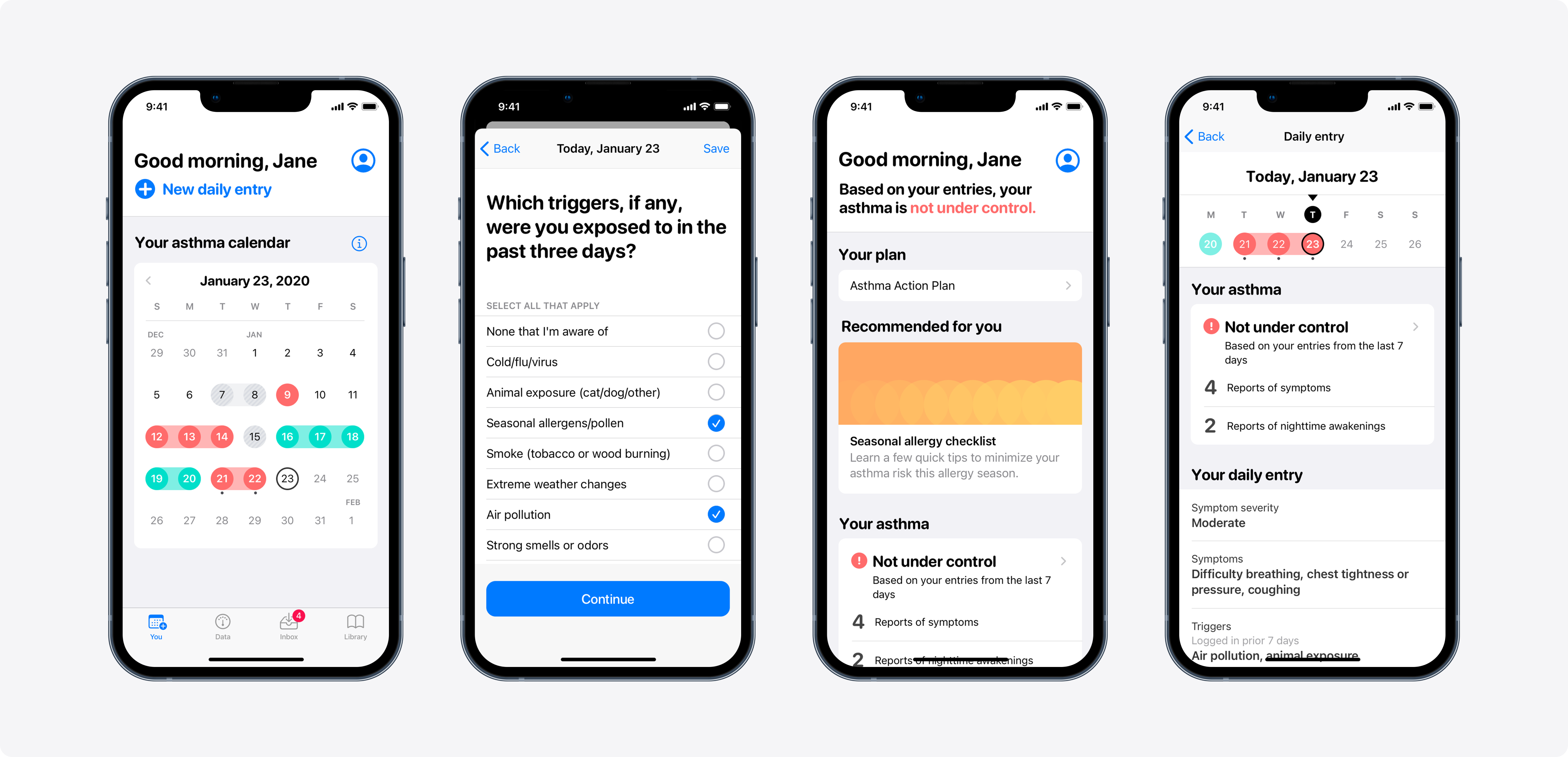
The core system for determining asthma control (below)
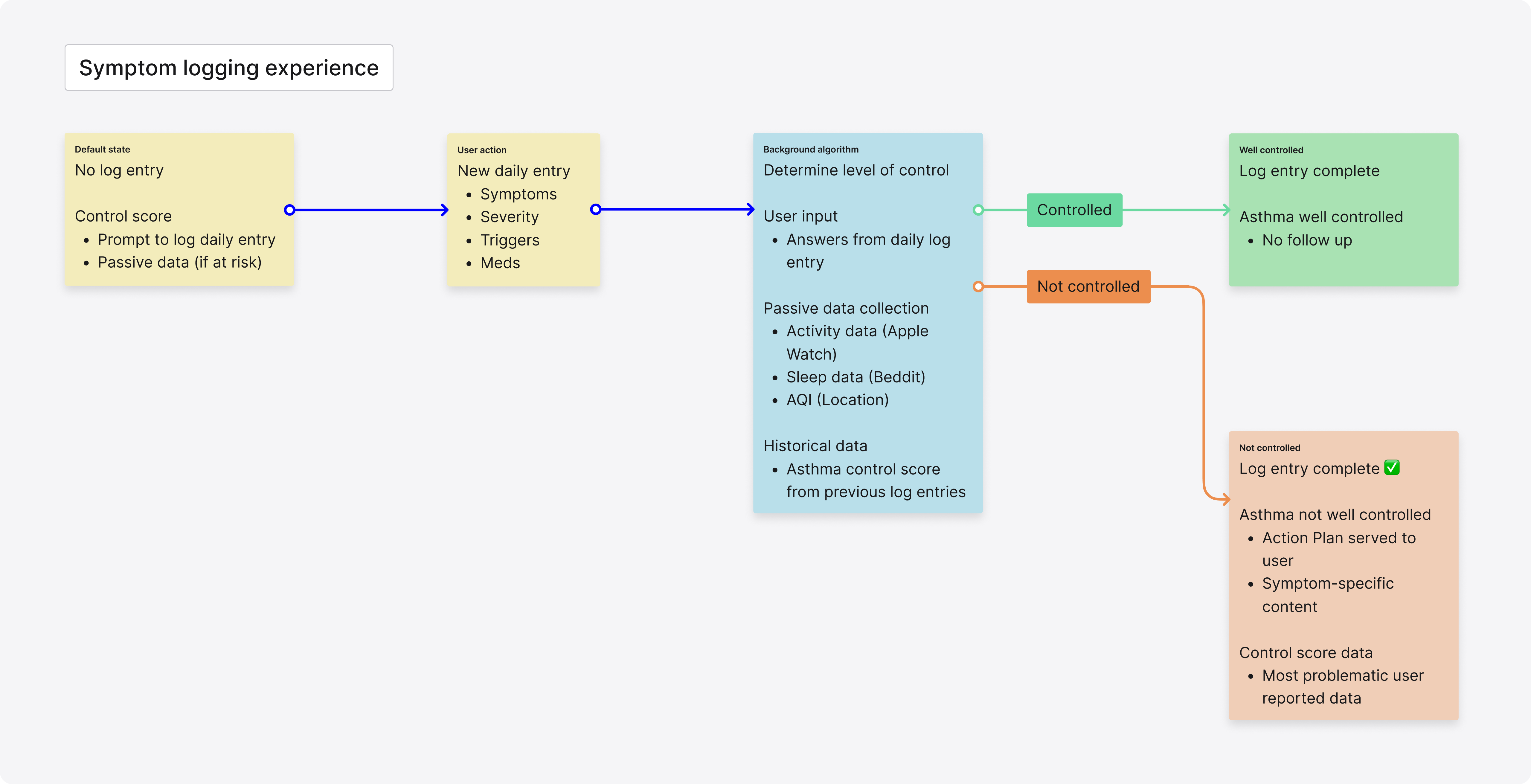
Alerts
To give participants the tools they needed to manage their asthma effectively, the study provided each participant with an Apple Watch and a Beddit Sleep Monitor to use during the study. The background data collected from these devices, combined with symptom logging, enabled participants to be made aware of deviations from their normal range.
The app shifts to let a user know when they may be out of range (right) and the logic system for how it works (below)
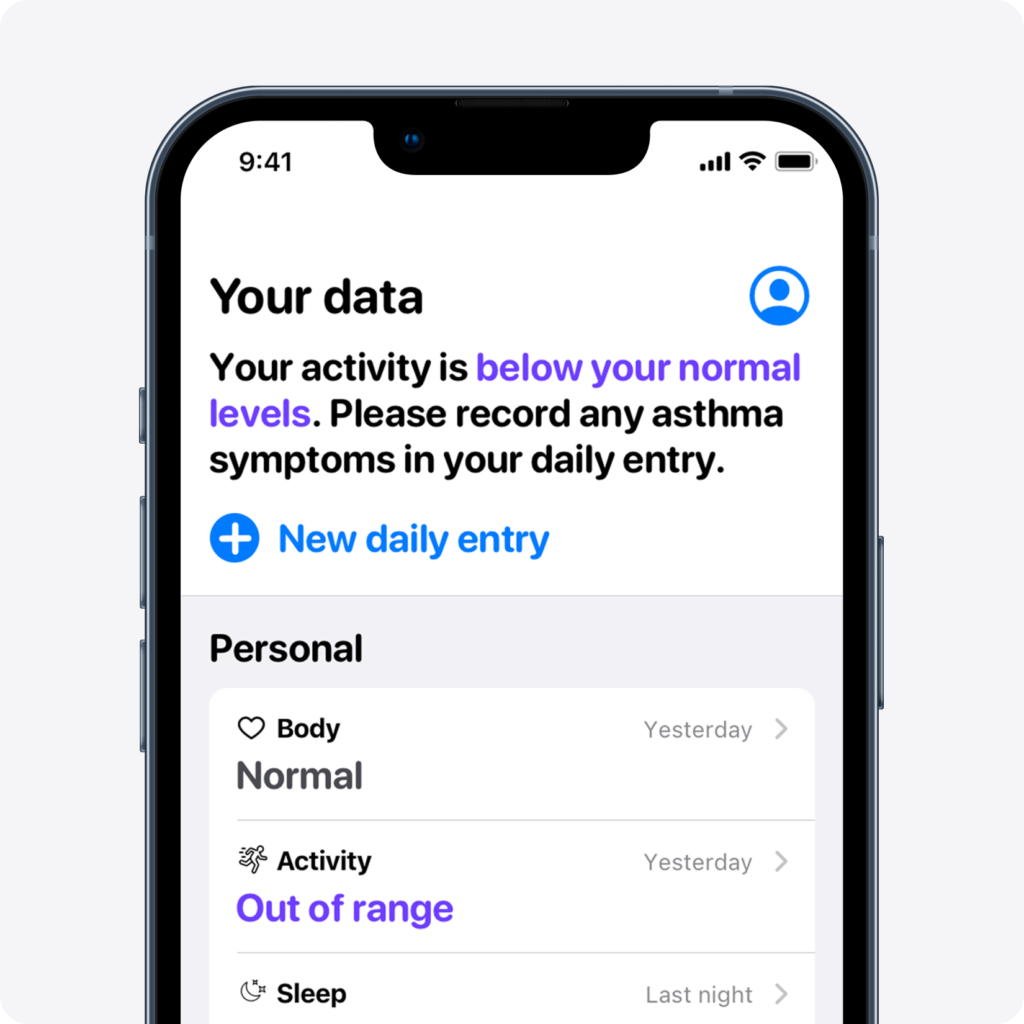
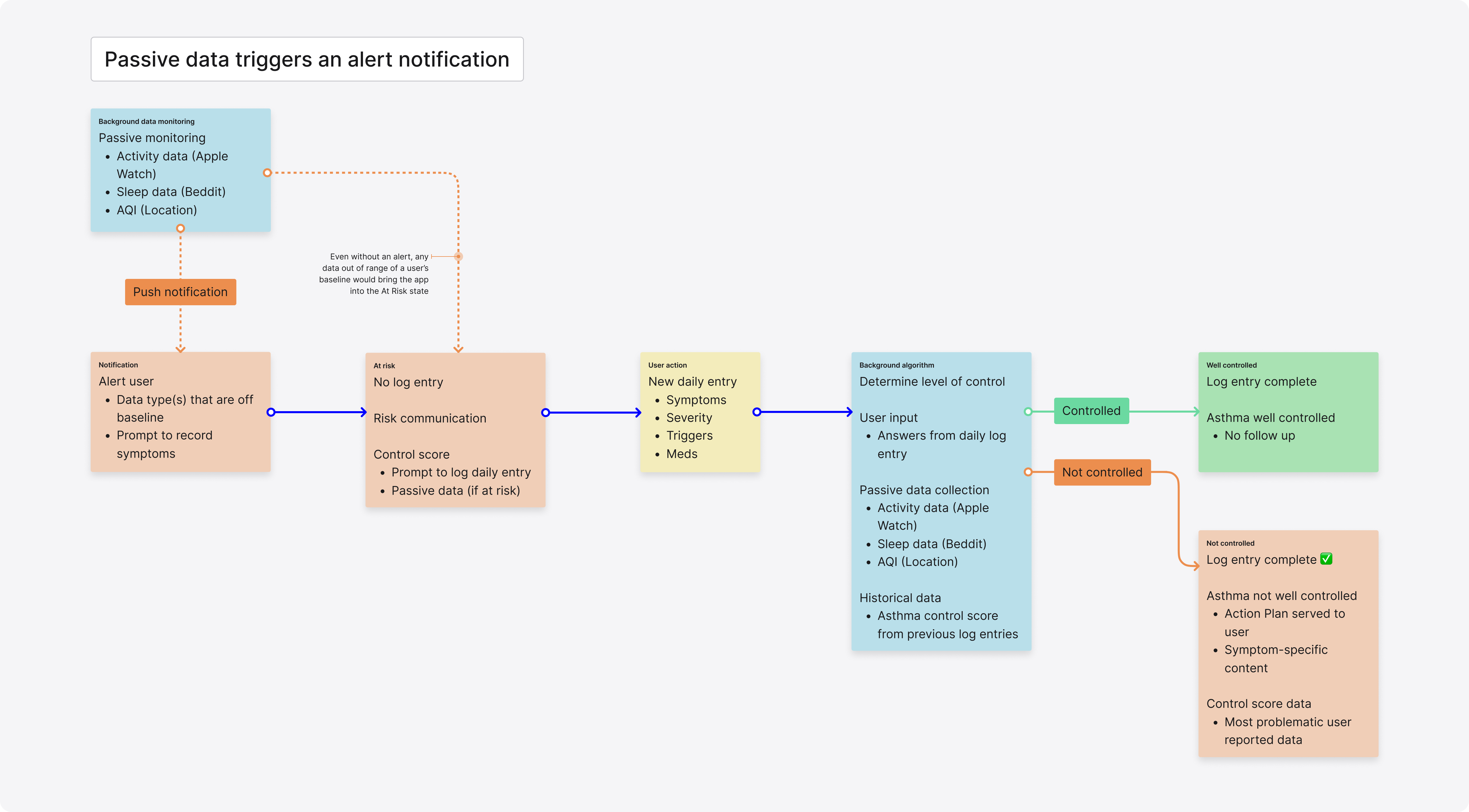
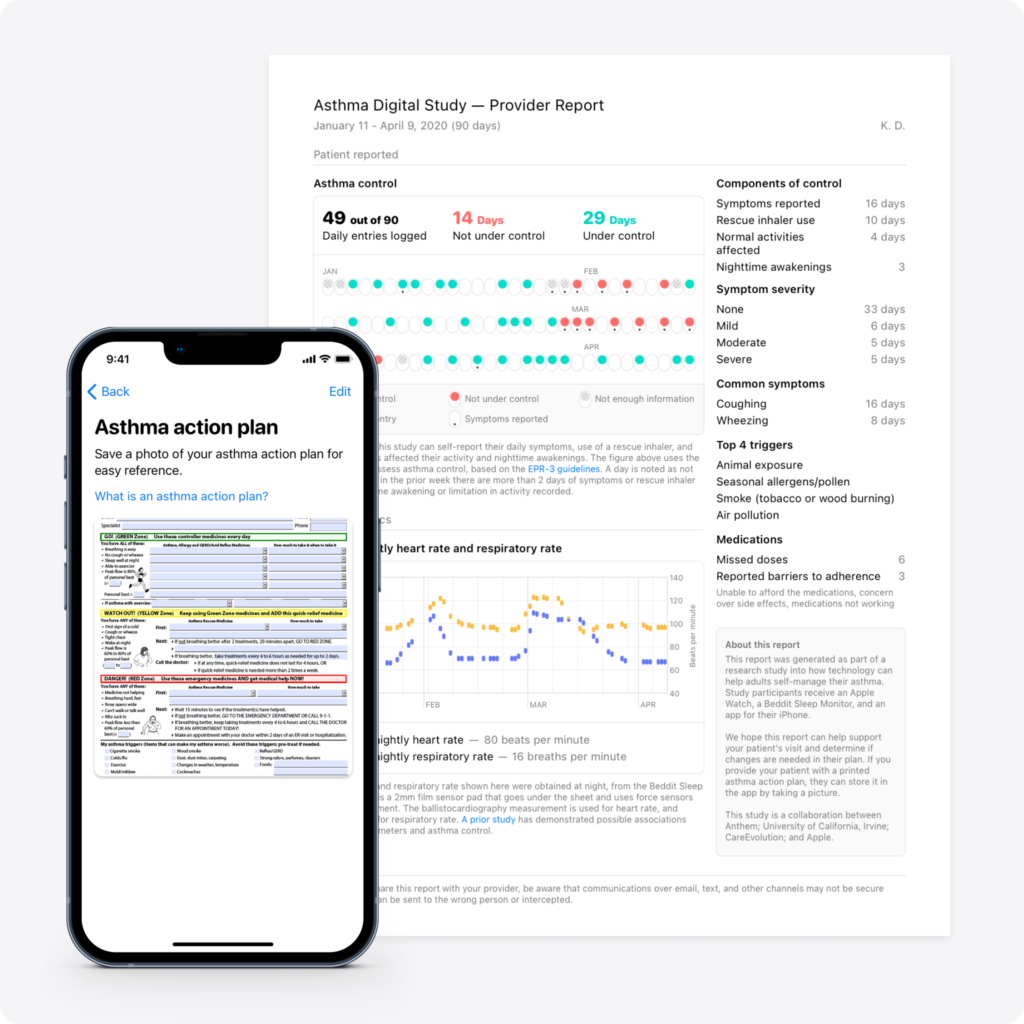
Asthma Action Plan
We recognized that users of our app might interpret data differently, and in our research with providers, we learned that they did not want patients coming in unnecessarily because their app indicated something worrying.
To address this, we provided the tools and context for patients and providers to have meaningful conversations about their experiences. When users saw their Asthma Action Plan, it would be the exact one that they created with their provider. To further contextualize the study, we designed an on-demand report that users could share.
Overall, our goal was to empower patients and providers to have informed, productive discussions about asthma management.